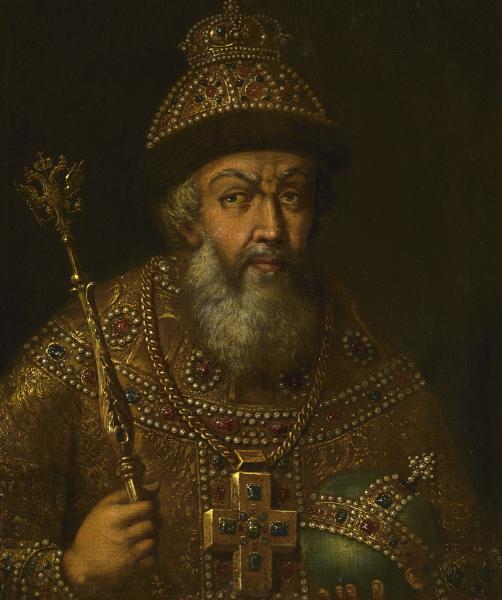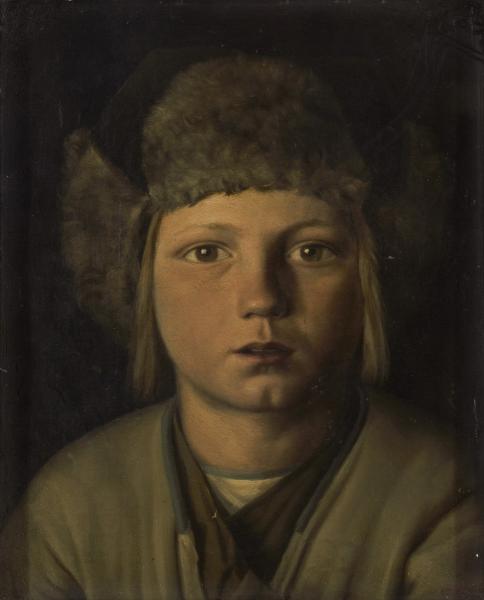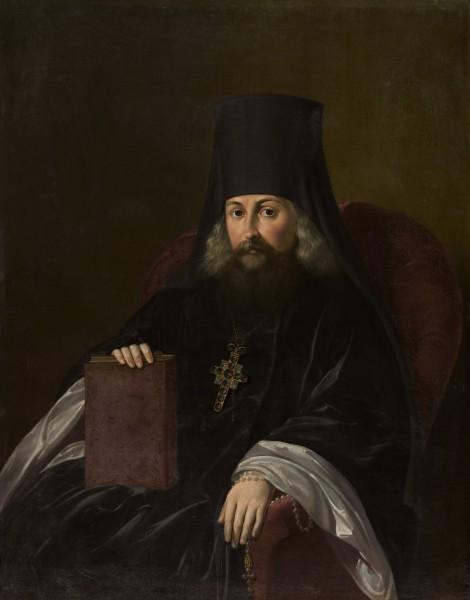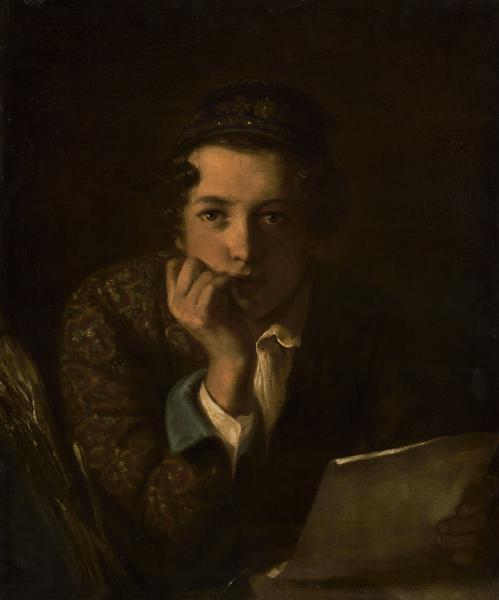The artist is unknown

Tsar Ivan IV Vasilievich (Grozny) (1530-1584) – son of Vasily III and Elena Glinskaya. Ventchans to the kingdom in 1547 after the short regenantance of the mother and the reign of the boyars. The same date is considered the beginning of the formation of the Moscow Kingdom (1547-1721), when John IV Vasilyevich during the coronation adopted the title of "king of all Rus’". Thus, he asserted himself as a sovereign ruler and heir to the Byzantine emperors (John was the grandson of Sofia Paleolog, niece of the last emperor Byzantium). However, the claims of the great Moscow princes to the royal title are still traced from Ivan III, when many rituals and symbols were borrowed from Byzantium. Approximately the same time, the birth of the concept of Moscow is the Third Rome, which affirmed the Messianic role of Russia as the main stronghold of Orthodoxy. In the 1550s he carried out a number of reforms with the participation of a narrow circle of close people-the elected Rada. At this time, a all -Russian judiciary was published, an ordered management system was improved, a permanent arrow of Sagittarius was created, the Stopatical Council (1551) was convened for unifying church rites and resolving the issues of canonization, a service on service, which established the obligation for landowners to be “Conno, crowded and crowded, is crowded and weapon ". Implemented a number of successful campaigns on the accession of Khanates – Kazan (1552) and Astrakhan (1556), as well as Bashkiria (1557). Was defeated in the Livonian war for going to the Baltic Sea (1558-1583). Due to the policy he was faced with opposition boyar circles, which led to the introduction of oprichnina and political conspiracies (1567 and 1569). Patronized the development of culture, church construction and education. "Formidable" Ivan IV was nicknamed the people for the execution of political traitors.
The portrait of Ivan the Terrible was written about a century and a half after his death, mainly, based on historical and literary descriptions. Thus, he represents more imaginary than the genuine appearance of the king. Pavel Klimov. Exhibition catalog in Malaga "The Romanov dynasty". 2017. With. 50/51.


